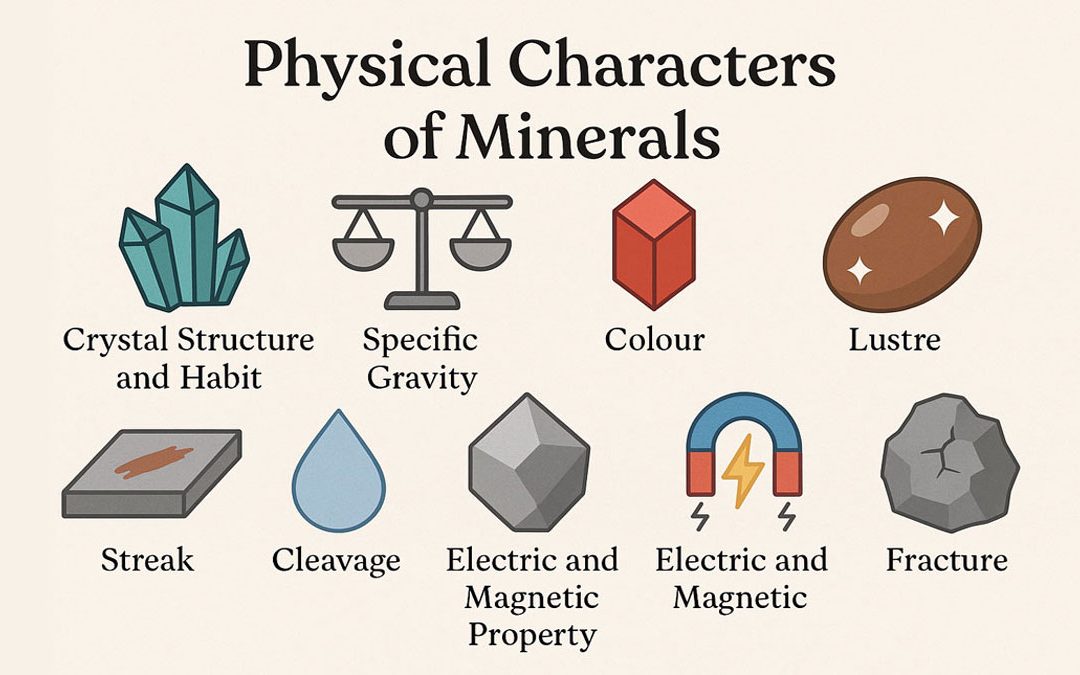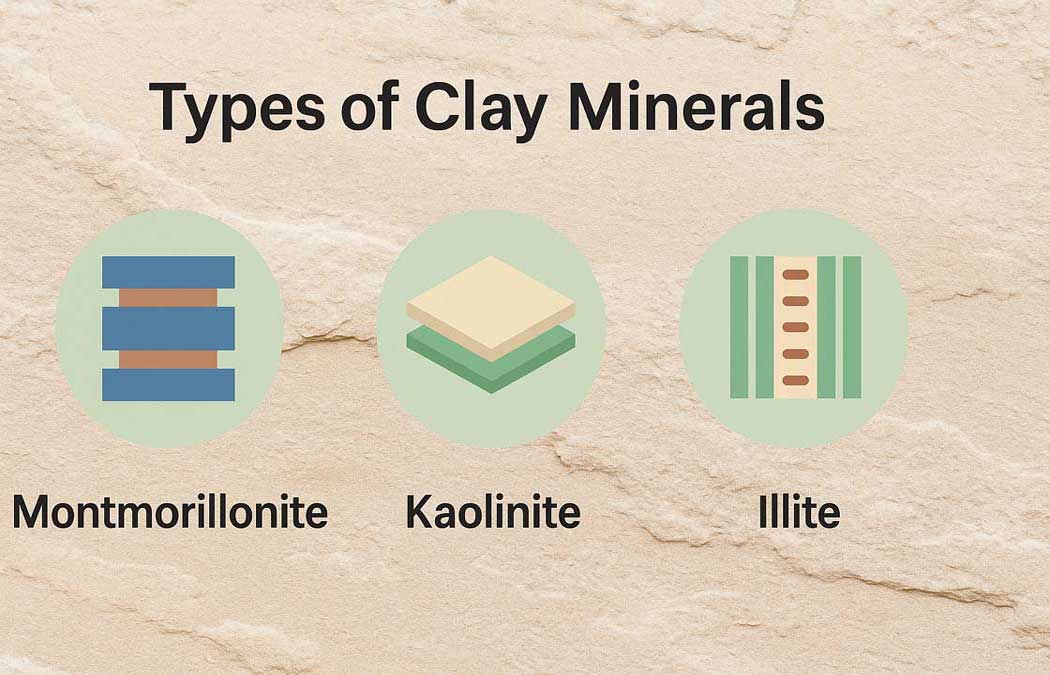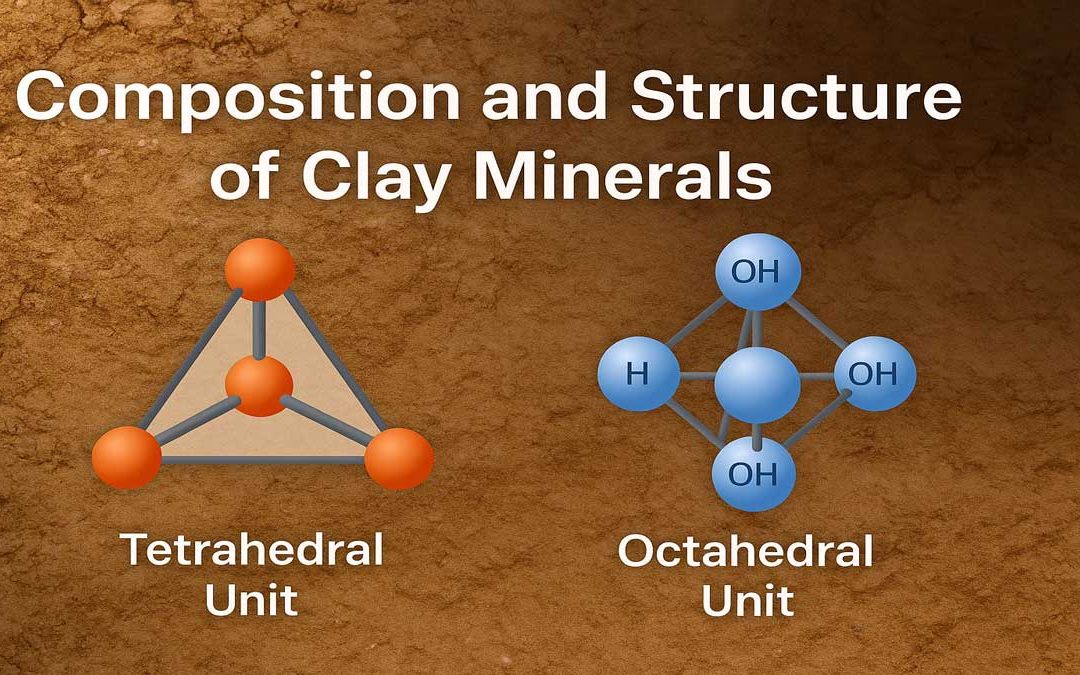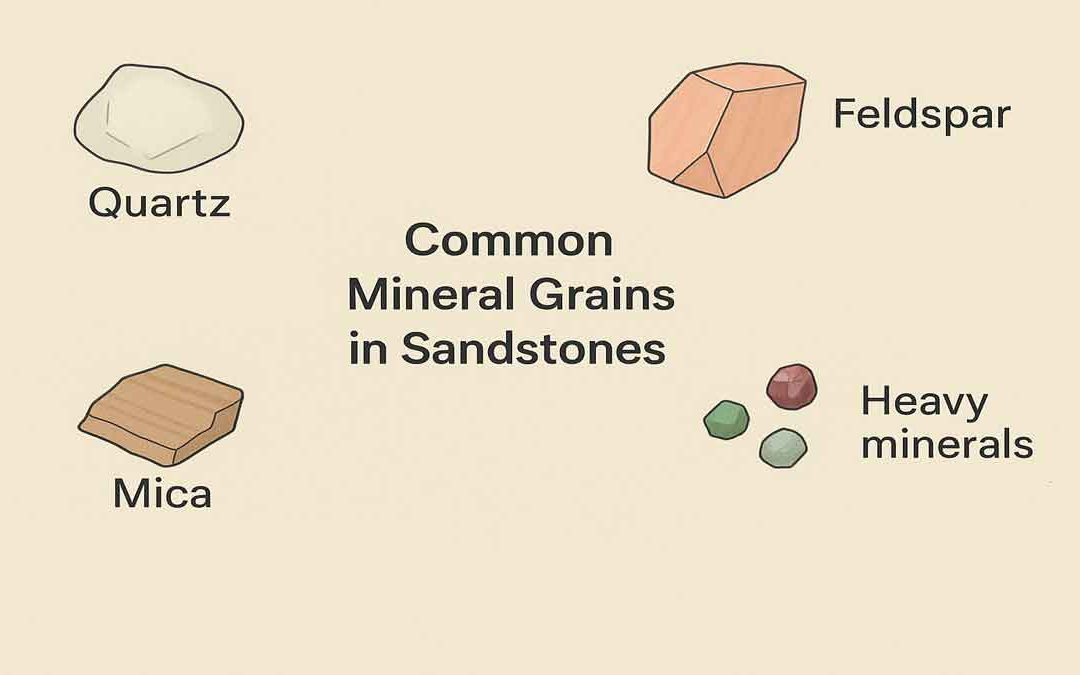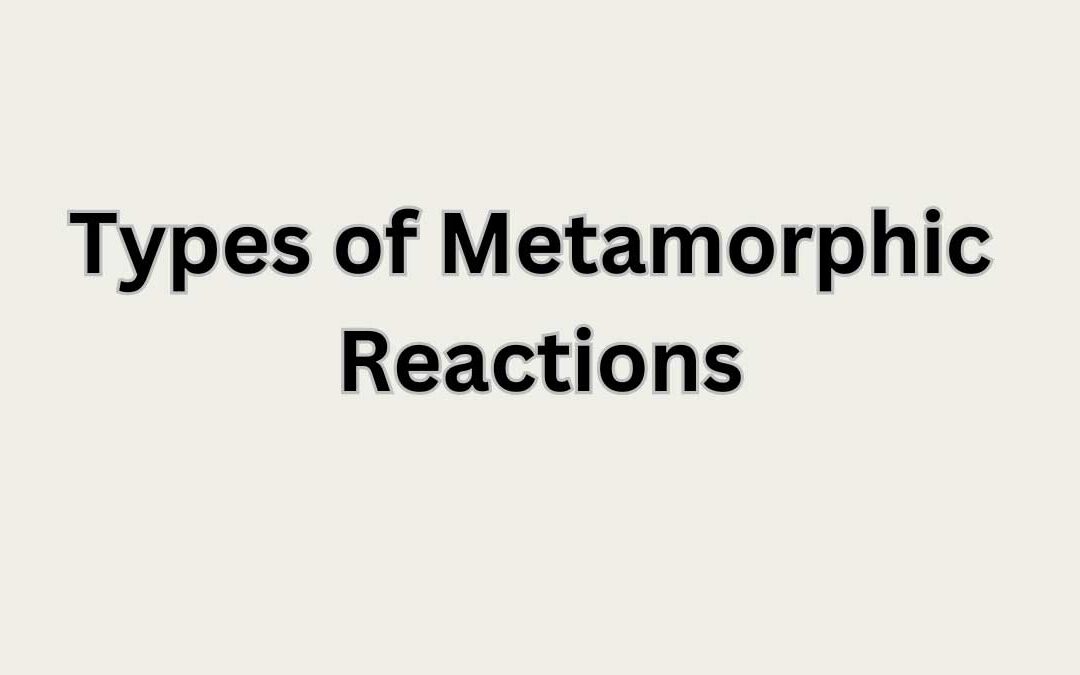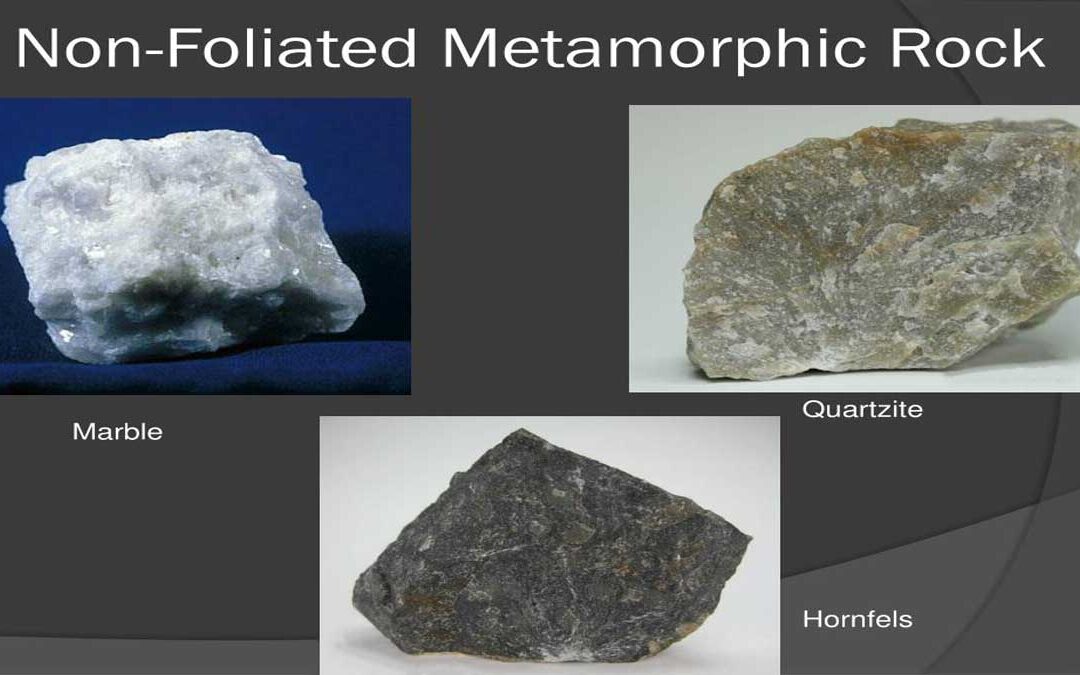
by Gelogia Team | Jul 24, 2025 | Mineralogy
The physical characteristics of minerals are essential traits used to identify and classify them accurately. These characters offer insights into a mineral’s behavior, structure, and properties under various conditions. Below is a detailed breakdown of the important...

by Gelogia Team | Jul 10, 2025 | Mineralogy, Physical Geology & Geomorphology
Clay minerals consist of crystalline materials that give soil its plasticity and cohesion. A clayey soil, along with non-clay minerals like quartz, feldspar, mica, and calcite, often includes one or two clay minerals made of microscopically thin sheets. Chemically,...

by Gelogia Team | Jul 1, 2025 | Crystallography & Mineral Optics, Mineralogy
Clay minerals are microscopic, layered silicate minerals that form the fine fraction of soils and sediments. They consist mainly of hydrous aluminum silicates and often include magnesium, iron, and organic materials. Their unique structure made up of tetrahedral and...

by Gelogia Team | May 30, 2025 | Mineralogy
Mineral Grains in Sandstones: A very large number of different minerals may occur in sandstones, and only the most common are described here. Quartz: Quartz is the commonest mineral species found as grains in sandstone and siltstone. As a primary mineral, it is a...

by Gelogia Team | Feb 9, 2025 | Mineralogy
Metamorphic Reaction: The study of metamorphic reactions provides vital information about the pressure and temperature conditions of metamorphism. During metamorphism, chemical reactions between components take place to produce a new mineral assemblage. The agents of...

by Gelogia | Jan 29, 2025 | Mineralogy, Uncategorized
Non-foliated rocks are metamorphic rocks without a layered structure, forming under uniform pressure or due to mineral composition. Common types include marble, quartzite, hornfels, granofels, and amphibolite, each with unique textures and properties. What are...
